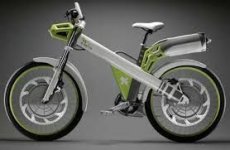New publications
IKEA plans to start selling electric bicycles
Last reviewed: 02.07.2025

All iLive content is medically reviewed or fact checked to ensure as much factual accuracy as possible.
We have strict sourcing guidelines and only link to reputable media sites, academic research institutions and, whenever possible, medically peer reviewed studies. Note that the numbers in parentheses ([1], [2], etc.) are clickable links to these studies.
If you feel that any of our content is inaccurate, out-of-date, or otherwise questionable, please select it and press Ctrl + Enter.

IKEA is the largest corporation selling "green" goods. By 2020, the company intends to obtain all of its energy from renewable sources, which will make it 100% carbon neutral. It was recently revealed that windmills are being built in one of the suburbs of Chicago that will be able to meet 165% of the energy needs of the company's offices and production facilities in the United States.
IKEA banned plastic bags back in 2008, long before it became a big issue, and the company plans to plant more trees than it produces in 2020.
The company offers a huge selection of "green" products - solar panels, LED lamps, fluorescent lamps, etc. Now the product categories have been expanded with the FOLKVÄNLIG electric bicycle. Now the company's new product can only be purchased in Austrian stores, but given the great popularity of this type of transport, it can be assumed that sales will soon reach the international level.
In Vienna, an IKEA electric bike costs around 800 euros (a little over $1,000), but with a special membership card you can get a discount of as much as 100 euros.
The electric bicycle is available in women's and men's versions, its weight is slightly less than 30 kg. The drive with parallel use of pedals will help the cyclist to travel about 70 km. The bicycle is an excellent alternative to a car, both a regular and an electric car.
Many experts are thinking about alternative energy sources. Professor Ozgur Sahin suggested that water evaporation could create a powerful energy source. In support of his theory, the doctor made a prototype of an electric generator that reacts to humidity levels. In 2012, studies were conducted that allowed scientists to establish that Bacillus subtilis bacteria become harder and wrinkled after drying, but if the humidity level becomes high again, it will return to its usual shape. In his experiment, the scientist coated a small silicon plate with a special solution of Bacillus subtilis bacteria. The scientist's moist breath activated the bacteria - they began to straighten up. The professor found that a small plate with changes in humidity can create power many times greater than the strength of human muscles. The changes in humidity should be the same as, for example, when moving from a sunny dry day to a foggy one. In other words, by moistening about 45g of dry bacteria, you can get enough power to lift the car 30cm from the ground.
The doctor created a generator from improvised means - a LEGO set, a magnet, a plate treated with a solution with bacteria, a small fan. As a result, the professor came up with a simple and effective way to generate electricity using humidity. Such a prototype can capture a small percentage of the energy received, but work in this direction is still ongoing.
